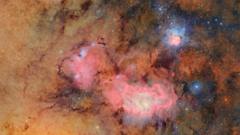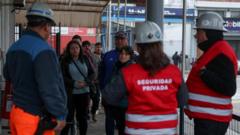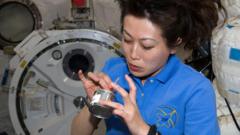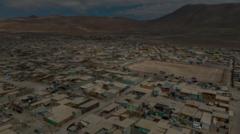The new telescope promises to enhance our understanding of the universe by capturing unprecedented detail and offering insights into phenomena like dark matter and potentially undiscovered celestial objects.
**First Images from the Vera Rubin Telescope: A New Era in Astronomy**

**First Images from the Vera Rubin Telescope: A New Era in Astronomy**
The groundbreaking Vera Rubin Observatory in Chile unveils its first celestial images, marking a significant advancement in astronomical research.
With a recent reveal of its first celestial images, the Vera Rubin Observatory in Chile showcases the impressive capabilities of its state-of-the-art digital camera, which is aimed at transforming the future of astronomical research. Located on the Cerro Pachón mountain, the observatory's initial images depict the Trifid and Lagoon nebulae, rich in colors and structures, located 9,000 light years from Earth. This marks more than just a photographic achievement; it signifies a leap towards extensive exploration and study of the cosmos.
The Vera Rubin Observatory is designed to be the world's leading instrument for examining the southern night sky for the next decade. It will regularly photograph the sky, promising to uncover more than tenfold the known objects within our solar system, which could also include hidden planets and faint supernovae. Experts, including Professor Catherine Heymans, celebrate this milestone as a culmination of years of preparation and engineering efforts in astronomy.
Central to the observatory's prowess is its impressive 3,200-megapixel camera, developed by the SLAC National Accelerator Laboratory, which will capture vast quantities of astronomical data every 40 seconds, enabling scientists to observe dramatic changes in celestial phenomena. The facility's capacity to monitor the same areas consistently sets it apart, promising new discoveries and thorough investigations into dark matter—an enigmatic structure making up a large part of the universe.
Scientists anticipate that such detail and consistency could finally bring to light the fabled Planet Nine among many other celestial mysteries. It opens doors not only for astronomical discovery but also emphasizes Earth's security through timely asteroid detection. Researchers excitedly project a future rich with information, marking this era with a significantly enriched understanding of our galaxy.
While the full potential of the telescope remains to be fully gauged, experts express optimism about its transformative capabilities in generating the largest dataset for immediate analysis. As the Vera Rubin Observatory embarks on its decade-long operations, it represents a new chapter in our ongoing quest to unravel the universe's secrets.
The Vera Rubin Observatory is designed to be the world's leading instrument for examining the southern night sky for the next decade. It will regularly photograph the sky, promising to uncover more than tenfold the known objects within our solar system, which could also include hidden planets and faint supernovae. Experts, including Professor Catherine Heymans, celebrate this milestone as a culmination of years of preparation and engineering efforts in astronomy.
Central to the observatory's prowess is its impressive 3,200-megapixel camera, developed by the SLAC National Accelerator Laboratory, which will capture vast quantities of astronomical data every 40 seconds, enabling scientists to observe dramatic changes in celestial phenomena. The facility's capacity to monitor the same areas consistently sets it apart, promising new discoveries and thorough investigations into dark matter—an enigmatic structure making up a large part of the universe.
Scientists anticipate that such detail and consistency could finally bring to light the fabled Planet Nine among many other celestial mysteries. It opens doors not only for astronomical discovery but also emphasizes Earth's security through timely asteroid detection. Researchers excitedly project a future rich with information, marking this era with a significantly enriched understanding of our galaxy.
While the full potential of the telescope remains to be fully gauged, experts express optimism about its transformative capabilities in generating the largest dataset for immediate analysis. As the Vera Rubin Observatory embarks on its decade-long operations, it represents a new chapter in our ongoing quest to unravel the universe's secrets.



















